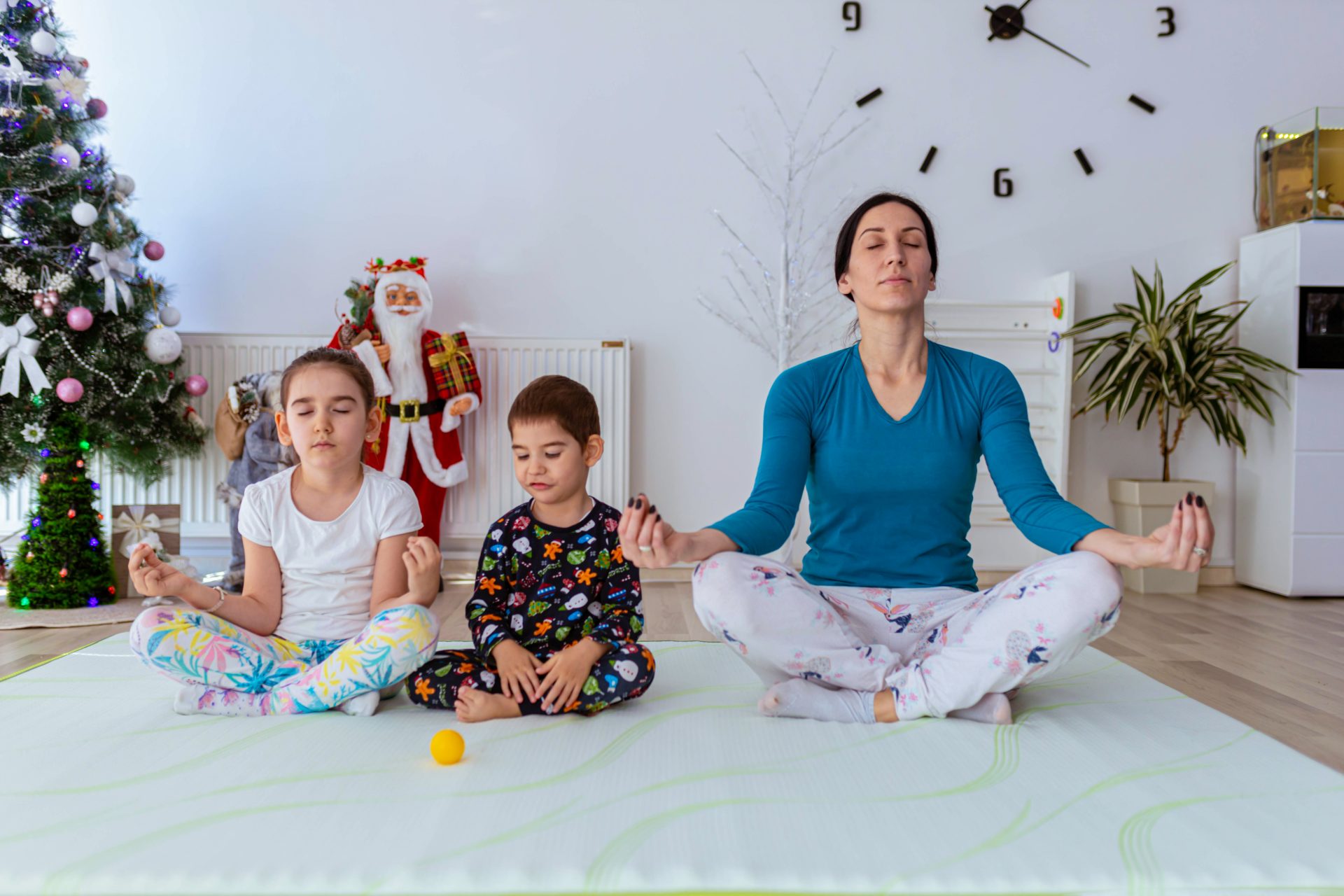The many benefits of meditation and how to get started
Meditation, a practice embraced worldwide for its myriad benefits to both mind and body, has existed for thousands of years. But more and more modern data show just how good it can be to cope with today’s challenges. Here’s a look at its benefits and tips on how to get started.
Research consistently shows meditation and mindfulness are effective at improving mental health. Indeed, at least 200 studies of mindfulness among healthy people found it was especially effective for reducing stress, anxiety, and depression, according to the American Psychological Association (APA).
Our minds are lost in thought 47% of the time, according to researchers at Harvard University. And most of that wondering is about past or future events. However, a landmark seven-year study published in Springer’s Journal of Cognitive Enhancement concluded that intensive and continued meditation practice is associated with enduring improvements in sustained attention.
According to Time Magazine, despite life events, most people “revert back to some kind of baseline happiness level within a couple of years of even the most devastating events.” Want to boost that baseline happiness? Try meditation, which has been shown to increase daily experiences of positive emotions like happiness. And if you're happy, those around you may also benefit, creating a virtuous circle.
Stress is your natural alarm system and it releases adrenaline that elevates blood pressure. The American Heart Association has acknowledged meditation as a potential way to reduce the risk of cardiovascular disease, with studies indicating it can lower blood pressure by making the body less responsive to stress hormones.
According to expert Jon Kabat-Zinn and Harvard Medical School, meditation can be effective at controlling pain. Zinn says the best technique is to lie on the ground and do a “body scan” noticing each part of your body. If you notice pain, acknowledge it, the thoughts and emotions that surround it, and gently breathe into it. By acknowledging it you can help the body relax.
Insomnia sufferers, rejoice! A study in JAMA Internal Medicine found that mindfulness meditation improves sleep quality by helping the mind to settle, reducing the time it takes to fall asleep, and increasing sleep duration. The study, which looked at middle-aged people with sleep issues, found meditators had less insomnia, fatigue, and depression at the end of the six sessions compared to those who took a sleep education class.
Regular meditation has been shown to boost the immune system, making you less susceptible to illnesses. In 2021, researchers at the University of Florida found that eight days of intense mediation caused “a robust activation of the immune system.” This was tested against more than 70 million data points from the blood samples of participants.
One of the mechanisms by which meditation works is by offering the practitioner not only insight but experiences into the true nature of their thoughts and emotions. Many meditations describe thoughts as clouds in the sky, but point out that you are not the thoughts, you are the blue sky. This gives meditators space to observe their thoughts and feelings with distance and without clinging.
A common question of some meditation traditions to reflect on is “Who am I?” That goes beyond name, nationality, profession or adjectives and into the deeper nature of self. This kind of meditation can help shed the idea that people are unchanging and permanent individuals. This, in turn, can help people leave behind labels and definitions that cause negative patterns and thoughts, allowing them to become more flexible and at peace.
According to the APA, depression is often a symptom of people being worried about what happened in the past while anxiety is a symptom of people getting caught up in the future. Meditation reveals that the future is an illusion, and so is the past, with some memories like bad soap operas on repeat. Meditation also shows the joy and peace that can come from living in the present moment, which is what is real and available.
Vipassana (mindfulness) and other meditations are all about gaining insight into the true nature of reality. Meditators are supposed to experience a sense that everything is connected and impermanent, which helps boost compassion and acceptance. “It is not impermanence that makes us suffer. What makes us suffer is wanting things to be permanent when they are not,” said Zen Monk Thich Nhat Hanh.
Meditation is an incredibly simple practice, but it is also a lot more difficult than it might sound. Here are some common techniques to get started and deepen your practice.
One of the easiest ways to get started is by downloading an app for meditation beginners (like Headspace) or using guided meditations available on the internet. There is a huge array of types like vipassana, loving-kindness, or meditations for pain, sleep, etc. Experiment to find the ones you like and that help you.
Of course, you don’t need internet access to meditate. The basic instructions are to sit in silence with your back straight and notice your breath. You can count your breath to help keep focus. From there, you can think about enjoying your breath, the present moment, send compassion to others, notice your thoughts, or just try to keep concentrating on your breath. You can notice your breath in places like your nose, chest, belly, or even feet!
But meditation isn’t just for sitting down. Some people can get a lot by doing walking meditations, preferably in a peaceful spot, but it can be anywhere. While walking, notice your body, your breath, and when a thought pops into your mind, acknowledge it but try not to follow it. Return to the present moment. Gently and slowly, enjoy the beauty of your environment, the sounds, the feeling of the breeze, and notice how you are connected to and part of nature.
Mindfulness isn’t just for special times, you can also incorporate it into your daily activities. It just involves noticing the present moment and coming into your breath and body. If you are washing the dishes, notice your breath, notice the water, notice the feelings. If you are eating, slow down, notice the taste of the food, and feel grateful.
Photo: Mart Production/Pexels
For best results, experts suggest making meditation and/or mindfulness a routine part of each day. Experts say you can start small with sit-down or walking meditation, even with just a few minutes. You can also dedicate a specific time, like while brushing your teeth or eating breakfast, to try to stay mindful. But of course, you can aim to be mindful or meditate more than that.
Meditation apps like the excellent ‘Plum Village’ app also have the feature of having a mindfulness bell ring every so often. For instance, you can set it to ring every 30 minutes. Then, when you hear it, you are supposed to pause what you’re doing (if possible) and take three mindful breaths. Though it is just three breaths, it can have a big calming effect and help you become aware of how you are moving through the day.
Photo: Arina Krasnikova/ Pexels
Most places in the world now have communities of meditators who gather to meditate together and learn from a teacher. There are many traditions so you can check out different ones and find what works for you. If there’s nothing in your area, there are also thousands of groups that meet regularly online.
One of the most effective ways to deepen your practice or even get started is to go on a meditation retreat. Again, retreats vary a lot, with some more gentle and some focused on long, seated meditations and silence, but they can be very powerful and help you connect with a community.
Follow Showbizz Daily to stay informed and enjoy more content!
































